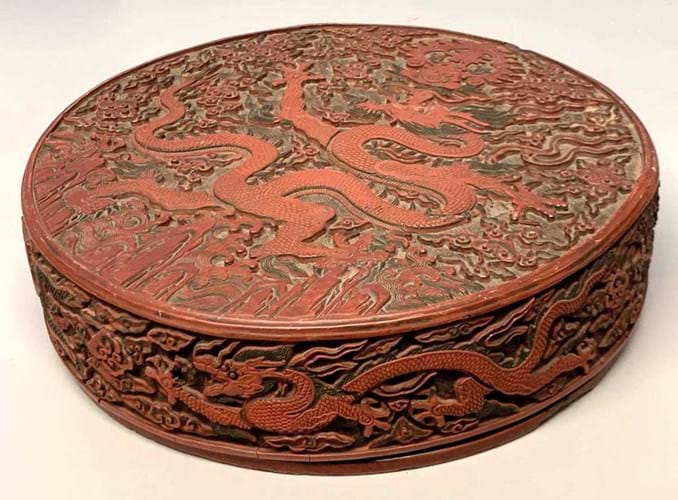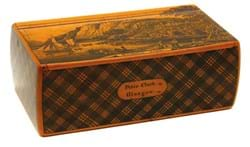It continued to be produced in quantity into the late Kangxi period
The 8in (20cm) example offered by Lindsay Burns (20% buyer’s premium) in Perth on October 5 is probably from the Transitional period– made in the era (1620- 83) when court patronage of the porcelain factory at Jingdezhen all but dried up.
Instead, ceramics were made for merchants, scholars and for export with production far more diverse than during ‘imperial’ times. Blue and white narrative decoration, often painted with episodes from China’s literary epics, was particularly popular.
This piece, with the incised ‘anhua’ bands often seen on Transitional wares, came for sale from a vendor whose family had owned a Glasgow shipping company. In good condition, save a small rim chip, it looked seriously undercooked at its estimate of £200-300. So it proved when it took £51,000.
Soapstone carving
The estate of a Royal Navy Commander Henry W Jennings, who was stationed in Sasebo, Japan, between 1946-48, yielded the exceptional Chinese soapstone carving sold by Ma San (20/10% buyer’s premium) in Bath on September 30.
Finely worked in relief from ‘pigeon’s blood’ stone with figures in a boat below mountains and pine trees with clouds, it is also inscribed with lines from a Ming dynasty poem, dated within the reign of the emperor Jiajing (1522-66) and signed San Qiao for the ‘founder of modern seal-carving’ Wen Peng (1498-1573).
The intricately worked green lacquer stand is carved as crashing waves.
It was deemed to be an honorific 19th century piece rather than 16th century. However, it attracted multiple phone bidders at its three-figure estimate before selling to a mainland Chinese buyer at £27,000.
As dealers and collectors scour online platforms for objects that have been overlooked and undercooked, Chinese ‘sleepers’ come thick and fast in the UK regions.
Estimate left far behind
At Keys (20% buyer’s premium) in Aylsham on October 14 a tersely catalogued red cinnabar lacquer ‘dragon’ box and cover shot past the guide of £30-40 to bring £63,000, which was 1575 times the estimate.
Boxes of this type, this one a decent size at 10in (25cm) across, are typically associated with the Ming period with many carrying six-character Jiajing reign marks.
The carved decoration to the cover (one more typically seen on Ming blue and white porcelain) shows a sinuous four-clawed dragon rising above cresting waves and a rocky shore, its head close to a shou character synonymous with longevity. To the side is a frieze of dragons in pursuit of the celestial pearl.



















